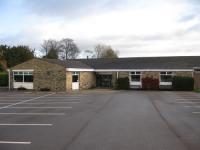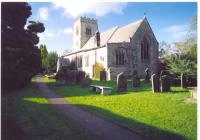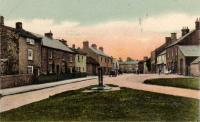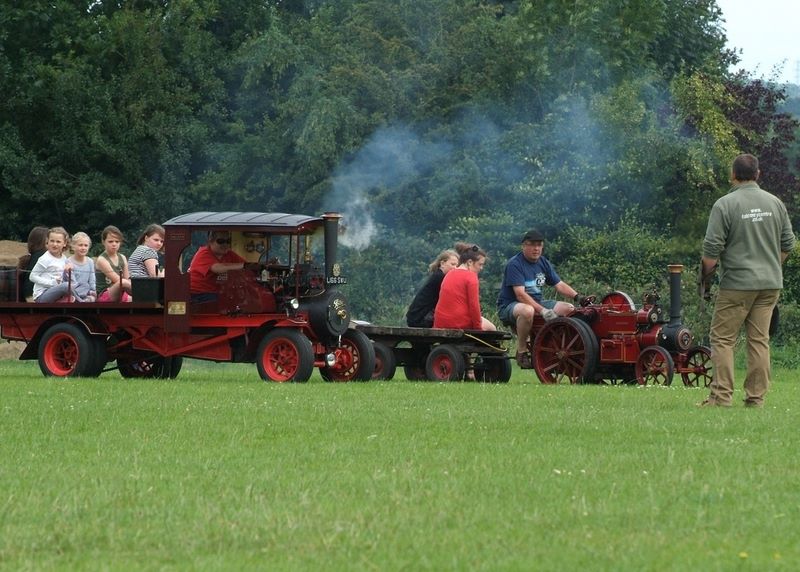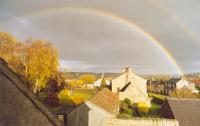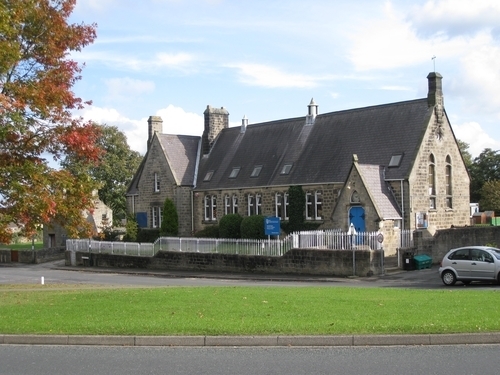Recent articles
© DT Online 2010 - 2025
| AshvilleAshville and its adjoining property Ashley House may be buildings of some antiquity. They have an appearance suggesting they were constructed at different times - although they abut each other, Ashville is set back slightly from Ashley House and they are connected by a single vertical mortar joint. The windows of Ashley House were recently (January 2010) replaced but their predecessors were recessed and their frames partly concealed which is a form of construction found after 1775. Those of Ashville are more flush with the walls with exposed frames - a style found before 1725. Of course, the windows in both properties are likely to have been renewed from time to time and we cannot be sure that they conform to their original positioning. Nevertheless, the Inclosure Map of the 1770s shows some structure at this point in Church Lane and this may well have been one or both of these dwellings. The properties are both very clearly identified on the O.S. Map of 1853 and succeeding surveys. Marks on the stone of the front elevation suggest that the present porch is a modern addition but the general appearance of the main house seems to accord with what was probably first built many years ago. The property has been in the possession of the Addyman family since it was acquired from William Haxby in January 1930. We have an old photograph, taken in 1915, showing the adjacent entrance to the agricultural land at the rear . . . Here is a modern photograph of the same view There are a number of references to this property in Book One "Villagers' Reminiscences" . . . "According to various builders, who have been in the house to do electrical work, "Ashville" started life as a simple two-up, two-down cottage. Strangely, on the house deeds - kept safely by the solicitor - are the names of many of the past vicars of St. Thomas a Becket Church.[A note is added in the book indicating that research may establish the significance of the list but see previous owners below.]. . . Of course, there was no central heating, only what was called a 'side oven'. It was heated by a fire, kept on all night, stacked up with slack (coal dust) to 'keep it in', so that it was still burning in the morning, guaranteeing plenty of hot water. Next to the living room/kitchen was a small area with a sloping roof, where there were slabs for bacon, hams and the rest, which we had cured . . . In the bedrooms we had brass electric lights, to which string was attached for use during the night . . . I think that army personnel must have been billeted in the house, because there were dart holes in all the doors, which had to be replaced. They were such a mess . . . The famous day of the flood in July 1968, I was frantically trying to block up the front of the house, while firemen were pumping out the cellar - under which even now there is a well. And there was still an old pump in the living room when I came here . . . The well was found by workmen, who were encouraged by my husband to go on digging in the hope of coming upon some treasure trove! Needless to say, they were unsuccessful, so filled it in again". Click here for information about previous owners. William Haxby had purchased the house in 1918 but it is known that he and his family were already then in occupation of the property, presumably, as tenants . According to the 1911 census the family consisted of William (aged 48) (a harness maker born in Hampsthwaite); his wife Emma Victoria (46) (born in Hull); their children William Thackray (14); Charles Askwith (11); George Thomas (6) and Mary Kathleen (3), all born in Hampsthwaite. Two other children, Lillian (1893-1971) and Elsie (born in 1894), had already left the village. Lillian to become a nurse with Queen Alexandra Nursing and Elsie on her marriage to Arthur Langstaff a farmer from Bingley, W.Yorkshire. At the time of that census the property was still occupied by the family of John Gill as it had also been in 1901. John Gill was a retired farmer and, according to the 1901 census he lived at Ashville with his wife Ellen and their daughters Mary Eleanor and Clara Blanche and granddaughter Olive Blanche. By 1911 John had died but his family were still there, Ellen being said to support herself with private means and Mary being employed as an elementary school teacher (at the village school?). Sometime before his death John was photographed striding up the Lane as we see in this print. We do not know the date when the Haxby family moved into the property but here is an old photograph showing the family outside the property and it is understood that William Haxby is the figure on the right.
An early view of Ashville with, from left to right Lillian Haxby and Mary Kathleen Haxby.
William (senior) also occupied Saddler's Cottage next to the school in Church Lane and used it as his workshop. In the book "Villager's Reminiscences" we read William (senior) also occupied Saddler’s Cottage next to the school in Church Lane and used it as his workshop. In the book “Villager’s Reminiscences” we read “Another character was ‘Saddler’ Haxby, to whom the lads used to go for bands(=leather) for their ‘whip an’ tops’. He persuaded me (Eric Lundell), Walter Laseby and Alan Briggs to join him as bell-ringers – and ‘he got us ringing them properly; aye, he did’. Mr Dawson (father of Gerald, John et al.) had a photo of ‘Saddler’, which showed how previously he had rung the bells by himself, with a rope in one hand and a treadle for one foot, as he chimed them.” and here is the photograph! "Another character was 'Saddler' Haxby, to whom the lads used to go for bands(=leather) for their 'whip an' tops'. He persuaded me (Eric Lundell), Walter Laseby and Alan Briggs to join him as bell-ringers – and 'he got us ringing them properly; aye, he did'. Mr Dawson (father of Gerald, John et al.) had a photo of 'Saddler', which showed how previously he had rung the bells by himself, with a rope in one hand and a treadle for one foot, as he chimed them" . . . and here is the photograph!
In this further photo we see William (senior) with two young companions – are they Walter Laseby and Alan Briggs? William (junior) was one of many Hampsthwaite men to enlist for military service during the first world war and joined the King's Own Yorkshire Light Infantry. Sadly, he was killed in action on the 3rd May 1917 at the age of 21. He is commemorated on the memorial at Arras in France and also on the Hampsthwaite War Memorial in the parish churchyard. His name is also recorded on the plaque in the village Memorial Hall. |













